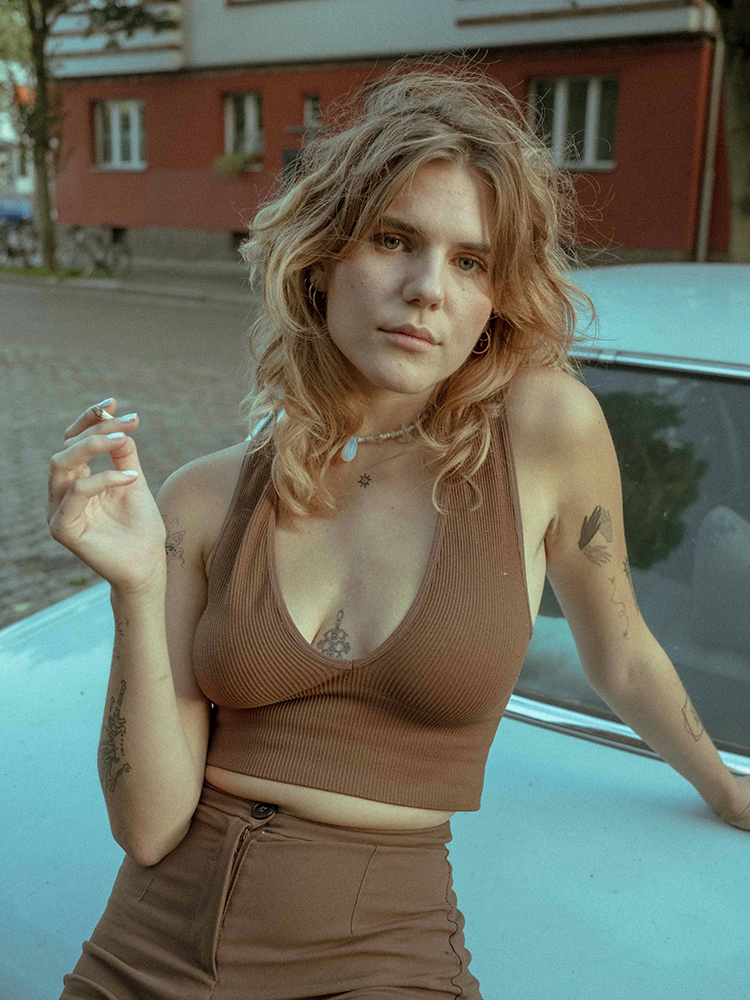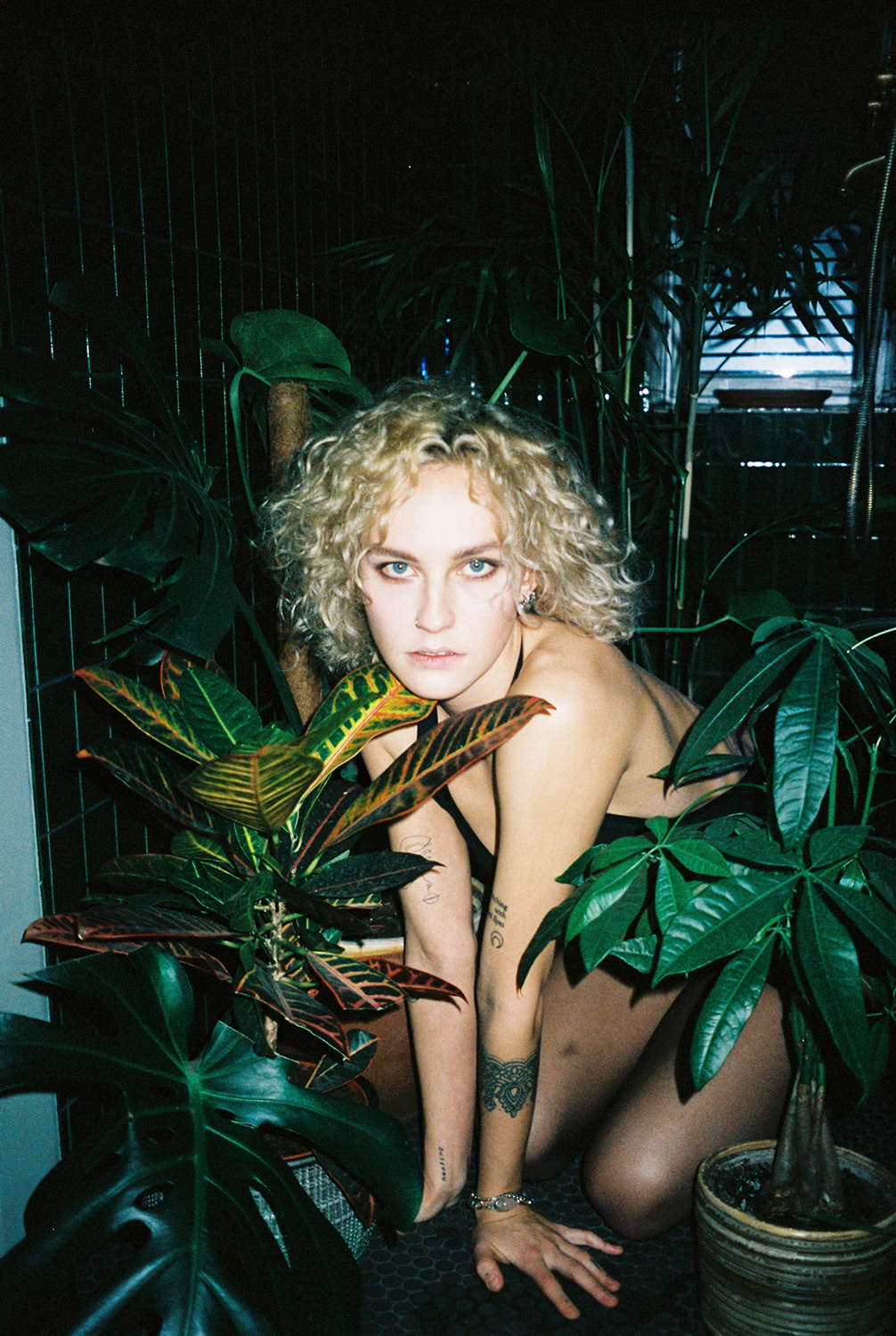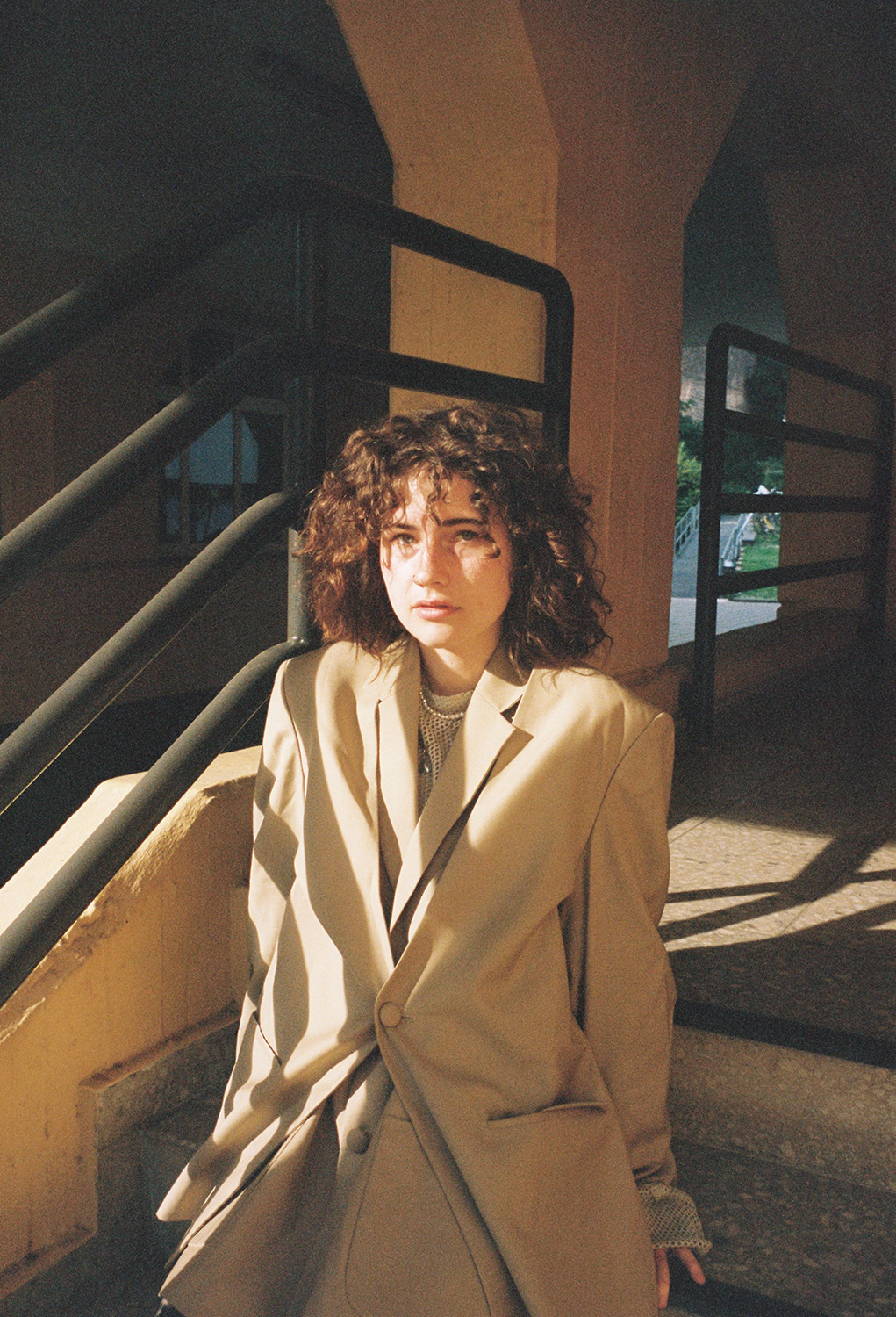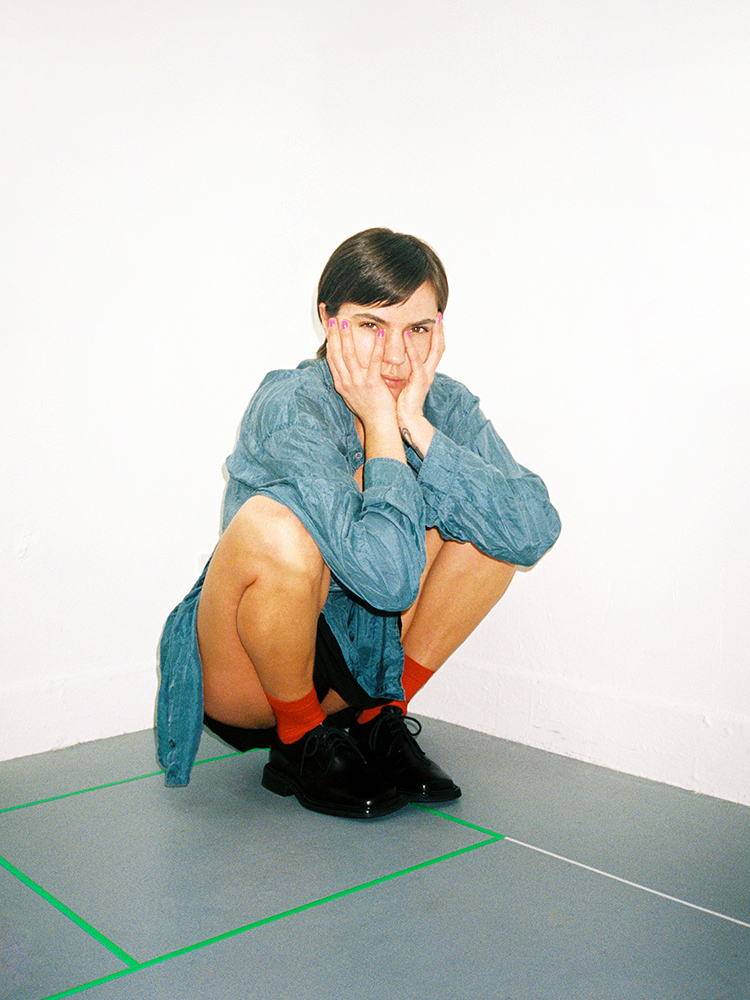
In conversation with
Franka Sühlo
Berlin, Germany
Hi Franka, please introduce yourself.
I’m 23 years old, have been living in Berlin for four years and am studying communication design. Around the same time I moved to Berlin, I discovered photography for myself. I bought a cheap point & shoot camera at a flea market and started taking pictures of friends and everyday things. At some point, I started planning and conceptually photographing larger projects and specialising in portrait photography.
What does analog photography mean to you? What excites / fascinates you about it?
Analogue photography allows me to capture moments in a way that digital photography never could. You are forced by the limited number of photos and the fact that you don’t know what the photos will look like until you have developed them, to be more concerned with what is happening in front of the camera. For me, this always means being fully present and aware of my surroundings or the people I am photographing.
For me it is an art form that gives me the opportunity to express myself creatively with the simplest of means. Due to the limited number of photos, it is important for me to know what and how I want to photograph before I start. In portrait photography, for example, I don’t have the opportunity to warm up after the first 100 photos or to edit the photos afterwards if I don’t like them. I put a lot of emphasis on getting to know each person I photograph, creating a familiar space and capturing them exactly as I see them and feel best reflects the person and their character. That being said, I love that every analogue photo is a surprise and you never quite know what you’ll end up with.
In your opinion, what are the advantages and disadvantages of analogue photography?
I think it varies from person to person, what is an advantage for me can be a big disadvantage for someone else. Personally, I don’t see any disadvantages to it, except for the big problem of the lack of sustainability that comes from producing and processing films.
Do you concentrate on a certain topic in your work?
I have specialised mainly in portrait photography. Somehow it is the most exciting kind of photography for me and I just love getting in touch with people and always having a creative exchange. However, I would also like to try my hand at other areas, such as street or documentary photography.
Are there (analogue) photographers who have influenced your aesthetic and approach?
I don’t know if and to what extent they have influenced me, but a few photographers whose work has definitely inspired me a lot are Nan Golden, Ren Hang and Petra Collins.
Do you have certain cameras and films that you prefer to work with?
My most common and favourite camera is my Olympus Mju, which was also my first analogue camera before I even knew about the current hype around it. With film, I always like to try new things and pick up expired film somewhere, but my standard film is always Kodak Gold 200.
Speaking of films: What does your workflow look like?
I have most of my films developed and digitised at my trusted lab. This is mainly because it is the fastest and most convenient way. I have everything I need at home to develop and expose myself, but I’m usually not motivated enough. Apart from a few small things, I hardly do any post-processing.
What advice would you have for other photographers who are reading this interview?
Don’t compare yourself too much with others and just do your thing.
If you publish your work on Instagram: curse or blessing?
Both. But I try not to place so much importance on it and not to take the platform too seriously.
Which 3 photo books can you recommend / should you definitely own?
There is simply too to make a selection of the three best.
Thank you so much for your time!
Favorites
Olympus Mju II
Kodak Gold 200
Color & B/W






